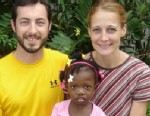The child is in a coma at Duke Hospital. Police are investigating because doctors told investigators the child's head trauma was inconsistent with his parents' account of how he was injured, court records show.
Records also show Wake County Child Protective Services has previously investigated abuse and neglect reports concerning the child since he was adopted from an orphanage in China in November.
On March 19, emergency workers took the child, Adam Stein of 121 Homegate Circle in Apex, to WakeMed in Raleigh. He was breathing but unconscious after suffering a traumatic head injury, according to a search warrant application filed at the Wake County Clerk of Courts Office.
When emergency workers arrived at the home, they found the child at the bottom of a staircase, Apex Police Department detective Worth T. Brown stated in the court affidavit. The child's parents, Philip and Michele Stein, were home, along with two neighbors, when emergency workers arrived.
Michele Stein told the EMS workers that the child had fallen down the stairs earlier in the day while her husband was still at work, Brown stated in the search warrant application. She said she thought Adam was fine and put him down for a nap.
When her husband came home from work, he checked on the boy and found him sleeping. Philip Stein said he tried to wake Adam a short time later but he was unresponsive, court records show.
The Steins called two neighbors, a nurse and emergency medical technician, who tried to wake Adam and told Philip Stein to call 911. Emergency room doctors determined that Adam's skull had been fractured with large bruises in the frontal region of his brain, Brown stated in the affidavit.
Adam was transferred March 20 to Duke, where Dr. Karen St. Claire with the child abuse and neglect team determined the injury was inconsistent with falling down six carpeted stairs.
Investigators later learned that the child had been admitted to the UNC-Chapel Hill Burn Center in January with second- and third-degree burns to both his hands.
Michele Stein told authorities that she had turned on hot water in the bathtub to give Adam a bath and had left him briefly unattended while she went to get him clean pajamas. Investigators with the county's child protective services suspected abuse, but determined the incident to be more consistent with "poor supervision and neglect," according to the affidavit.
In February, workers at the day care Adam attends noticed bruises on his back and leg. They also noticed that the child had lost weight since enrolling.
Neither Brown nor the Steins were available for comment.
